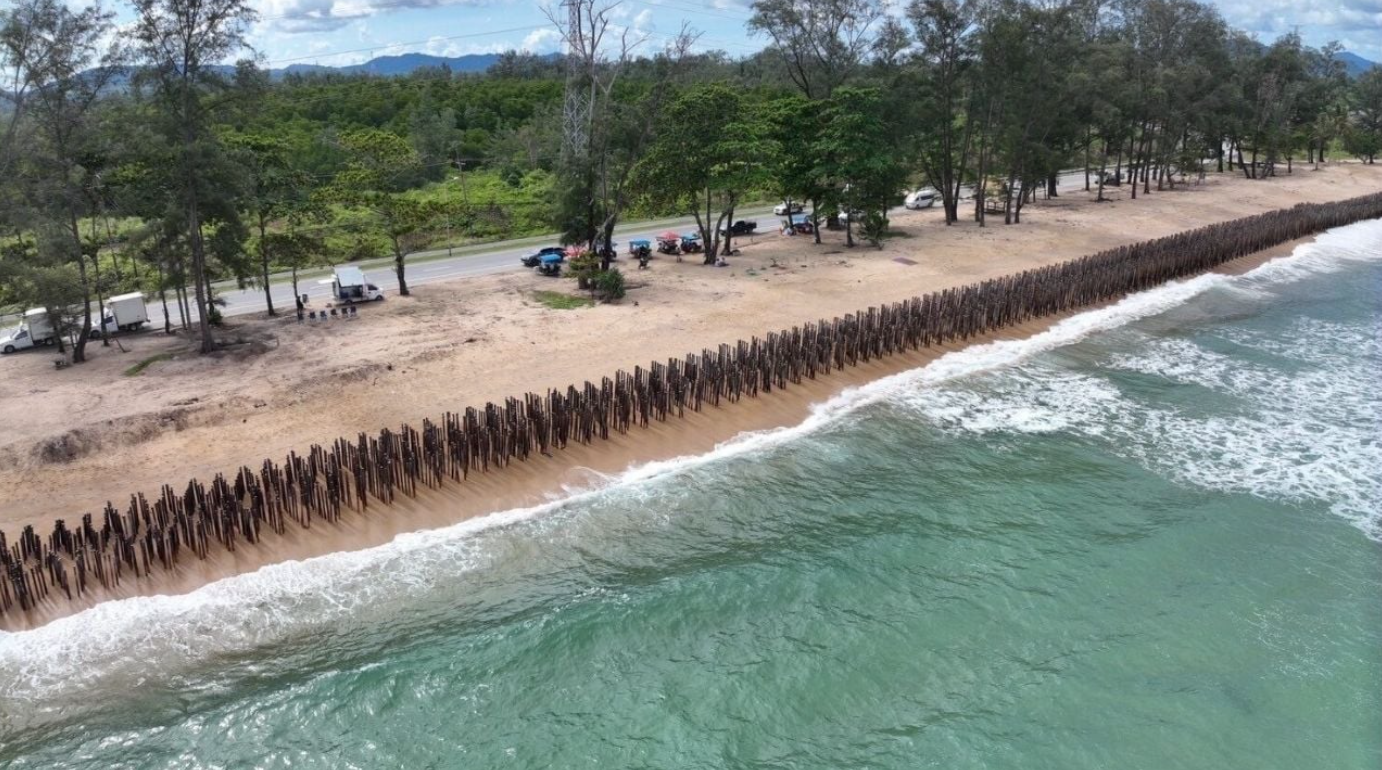Phuket’s fight against coastal erosion just leveled up. Authorities have kicked off a smart ecological solution a zigzag wooden sand‑trap fence installed along Sai Kaew Beach in Sirinat National Park. This isn’t about cement walls; it’s about working with nature to rebuild beaches and protect vulnerable shorelines.
How the Sand‑Fence Works: Sand Trapping and Natural Recovery
Think of the sand‑fence like a giant comb laid out across the beach waves bring new sand in, but the zigzag pattern catches and holds it, allowing dunes to rebuild. What’s more, behind the fence, native plants such as sea purslane, sea pandanus, Indian almond, and sea hyacinth are being planted. Their roots form a living green barrier that stabilizes the shore organically.
What’s Been Done So Far & What Comes Next
| Project Phase | Activities Completed | Results or Next Steps |
|---|---|---|
| Phase 1 | Installed ~500 m zigzag fence; planted coastal vegetation | Achieved restoration of 30–50 m of beach width; phase due to complete by August 2025 |
| Phase 2 | Planning additional fences (~1,150 m) and expanded planting | Awaiting funding approval (~B5.85 million) to continue through fiscal year 2025 |
Officials estimate erosion at Sai Kaew has shrunk the beach horizontally by up to 7.35 m and vertically by around 2.42 m hardly minor shifts. If left unchecked, key infrastructure like the main exit road could be compromised within 3–4 years.
Why It Matters – Environment, Community, and Tourism
This project packs benefits on multiple fronts:
-
Environmental: It’s eco‑friendly using only wood and plants, no concrete. It also helps restore turtle nesting habitats and supports natural beach regeneration.
-
Local communities: Protecting roads, homes, and businesses from erosion reduces disaster risk and preserves livelihoods.
-
Tourism: Better beaches mean happier tourists. And fewer repair bills for local governments.
Why the Sand‑Fence Approach Beats Concrete Sea Walls
Fancy seawalls and heavy construction used to be the go‑to solution across Thailand. But residents frequently reject seawalls: for example, a proposed wall at Surin Beach was halted due to strong opposition. Concrete can worsen erosion over time, disrupt wildlife, and spoil coastline beauty. By contrast, sand‑fences allow the beach to adapt naturally, without eyesores or ecological damage.
Phase 1 Success & Expansion Momentum
Officials report that the sand has already built back 30–50 m of beach in phase one. With that encouraging progress, phase two is set to expand the fence system, adding two more long fence sections and more native planting all backed by funding approvals for the 2025 budget cycle.
This project reflects a larger strategic shift in Phuket toward sustainable coastal management moving away from hard infrastructure and toward nature‑based solutions.
Conclusion
Phuket’s sand‑fence initiative at Sai Kaew Beach is a smart, sustainable response to coastal erosion. By trapping sand with wooden zigzag fences and reinforcing it with native vegetation, the project is restoring lost beach and strengthening the shoreline, while preserving natural beauty and supporting local communities. As phase one nears completion and phase two rolls out, this nature‑first approach could serve as a model for coastal protection across Thailand and beyond.
